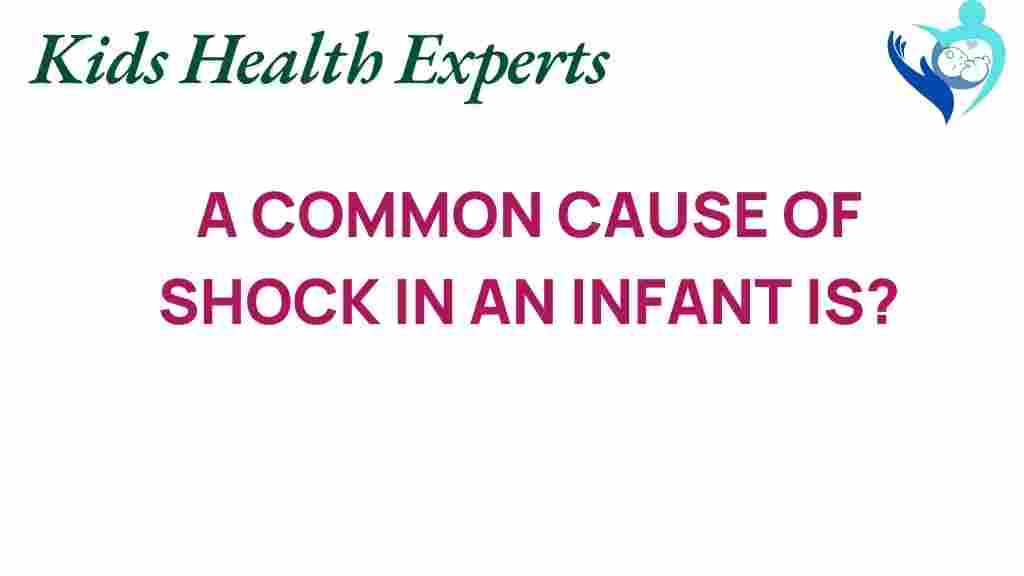Understanding Infant Shock: What Every Parent Should Know
As a parent, ensuring the health and safety of your infant is a top priority. One of the critical conditions that can arise suddenly and require immediate attention is **infant shock**. Understanding the symptoms, causes, treatment options, and when to seek emergency care is essential for every parent. This comprehensive guide aims to educate parents on all aspects of infant shock, providing valuable insights into pediatric health and parental guidance.
What is Infant Shock?
Infant shock is a medical emergency characterized by a sudden drop in blood flow throughout the body, leading to inadequate oxygen supply to vital organs. It can occur due to various underlying issues, making it imperative for parents to recognize the signs and respond promptly.
Symptoms of Infant Shock
Identifying the symptoms of **infant shock** is crucial for timely intervention. Common symptoms include:
- Rapid or weak pulse
- Pale or bluish skin, especially around the lips and fingertips
- Cold extremities
- Unresponsiveness or decreased alertness
- Rapid breathing or difficulty breathing
- Excessive crying or irritability
- Weakness or lethargy
If you notice any of these symptoms, it’s essential to take action immediately.
Causes of Infant Shock
Understanding the causes of **infant shock** can help parents identify potential risks. Some common causes include:
- Infections: Severe infections, such as sepsis, can lead to shock.
- Dehydration: Excessive vomiting, diarrhea, or inadequate fluid intake can cause dehydration, resulting in shock.
- Allergic reactions: Anaphylaxis, a severe allergic reaction, can trigger shock.
- Trauma: Physical injuries can lead to significant blood loss and shock.
- Heart problems: Congenital heart defects may impair the heart’s ability to pump blood effectively.
Recognizing these causes can guide parents in preventing potential incidents that may lead to shock.
Treatment for Infant Shock
Immediate treatment for **infant shock** is vital to restore blood flow and oxygen to the body’s organs. The approach to treatment may vary depending on the cause of the shock.
Initial Steps to Take
If you suspect your infant is in shock, follow these initial steps:
- Call Emergency Services: If your infant is showing signs of shock, call for emergency medical assistance immediately.
- Keep the Infant Calm: Try to keep your baby calm and still while waiting for help. This can help minimize stress on the body.
- Positioning: If your infant is conscious, lay them down flat and elevate their legs slightly to promote blood flow to vital organs.
Medical Treatment
Upon arrival at the hospital, medical professionals will take over and assess the situation. Treatment may involve:
- Intravenous (IV) Fluids: Administering fluids to rehydrate and stabilize blood pressure.
- Medications: Administering medications to address the underlying cause of shock, such as antibiotics for infections.
- Monitoring: Continuous monitoring of vital signs to assess the infant’s response to treatment.
Emergency Care Tips for Parents
While waiting for medical assistance, parents can take the following emergency care measures:
- Stay Calm: Your calm demeanor can help soothe your infant and manage the situation better.
- Keep Airway Clear: Ensure your baby’s airway is not obstructed. If they are unresponsive, be prepared to perform CPR.
- Document Symptoms: Note down the symptoms and any changes. This information can be helpful for medical personnel.
Parental Guidance on Infant Safety
Preventing infant shock begins with understanding how to keep your child safe. Here are some guidelines:
- Regular Check-Ups: Schedule regular pediatric health check-ups to monitor your infant’s growth and development.
- Vaccinations: Ensure your infant receives all recommended vaccinations to protect against severe infections.
- Hydration: Keep your infant well-hydrated, especially during illness when dehydration can occur.
- Safe Environment: Create a safe environment to minimize the risk of trauma and accidents.
Recognizing the Signs of Dehydration
Dehydration can lead to shock. Parents should be aware of the signs:
- Dry mouth and tongue
- Fewer wet diapers than usual
- Sunken eyes or cheeks
- Unusual irritability or lethargy
Troubleshooting Common Concerns
Even with precautions, emergencies can still happen. Here’s how to troubleshoot common issues:
What to Do During a Fever
Fever can be a sign of infection, which might lead to shock. Monitor your infant’s temperature and look for:
- Signs of distress or fever above 100.4°F (38°C)
- Changes in behavior, such as lethargy or irritability
If these symptoms occur, consult your pediatrician promptly.
Handling Allergic Reactions
Be aware of the signs of allergic reactions, such as:
- Swelling of the face or lips
- Difficulty breathing
- Hives or rashes
If you suspect anaphylaxis, administer an epinephrine auto-injector (if available) and call for emergency help.
Conclusion
Understanding **infant shock** is crucial for every parent. Recognizing the symptoms, knowing the causes, and being prepared for treatment can save your child’s life. Always prioritize pediatric health by keeping regular check-ups and ensuring a safe environment for your infant. If you ever find yourself in a situation where you suspect your baby is in shock, act quickly and seek emergency care.
For more information on pediatric health and safety tips, visit this resource to stay updated with the latest guidelines.
By staying informed and prepared, you can ensure that you are doing everything possible to safeguard your infant’s health and wellbeing.
This article is in the category Conditions and created by KidsHealthExperts Team
